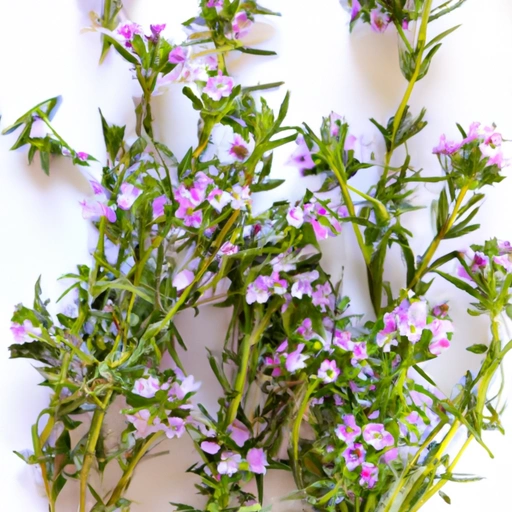Summer Savory
Description

Summer savory, known scientifically as Satureja hortensis, is a delicate herb belonging to the mint family. This annual plant is prized for its aromatic leaves, which exude a peppery flavor with hints of marjoram, mint, and thyme. Its slender, bronze-green leaves and tiny lilac flowers make it not only a flavorful ingredient but also an attractive garden plant.
Summer savory is a popular herb in culinary traditions worldwide, offering a unique taste that complements a wide range of dishes. It is available fresh during its growing season and dried for year-round use. As a spice, it can be found ground or in whole-leaf form, and it is measured in both metric and imperial units to cater to a global audience. Common measurements include teaspoons (tsp), tablespoons (tbsp), grams (g), and ounces (oz).
Common uses
Summer savory's peppery flavor makes it a favorite for seasoning a variety of foods. It is commonly used to flavor beans, soups, stews, and meat dishes. The herb is also a key ingredient in the traditional spice blend 'Herbes de Provence' and is often used in marinades and dressings.
Nutritional value
Calories
Summer savory is low in calories, making it an excellent addition to a healthy diet.
Protein
While it is not a significant source of protein, summer savory contains small amounts that contribute to its overall nutritional profile.
Fat
This herb contains negligible amounts of fat, which is beneficial for those monitoring their fat intake.
Carbohydrates
Summer savory has a low carbohydrate content, primarily composed of dietary fiber.
Vitamins
Rich in vitamins, summer savory includes vitamins A and C, which are important for immune function and vision.
Minerals
The herb provides essential minerals such as iron, calcium, and magnesium, contributing to bone health and various bodily functions.
Health benefits
Summer savory is believed to have digestive and antiseptic properties. It is also said to be an effective herb for soothing sore throats and relieving minor gastrointestinal discomfort.
Potential risks
While generally safe for consumption, summer savory should be used in moderation. Overconsumption may lead to stomach upset, and it should be avoided by those with known allergies to plants in the Lamiaceae family.
Common recipes
Summer savory is a staple in many recipes, from bean dishes and sausages to poultry and vegetable medleys.
Cooking methods
It can be used both fresh and dried, and is suitable for a variety of cooking methods including sautéing, baking, and stewing.
Pairing with other ingredients
Its peppery taste pairs well with meats, especially pork and poultry, and is a compliment to vegetables like beans, peas, and lentils.
Summary
Summer savory is a versatile herb with a rich history and a multitude of culinary applications. Its aromatic flavor, coupled with its nutritional benefits, make it a valuable ingredient for cooks around the world. Whether used fresh or dried, summer savory can enhance the flavor profile of numerous dishes, contributing both zest and health benefits to your meals.